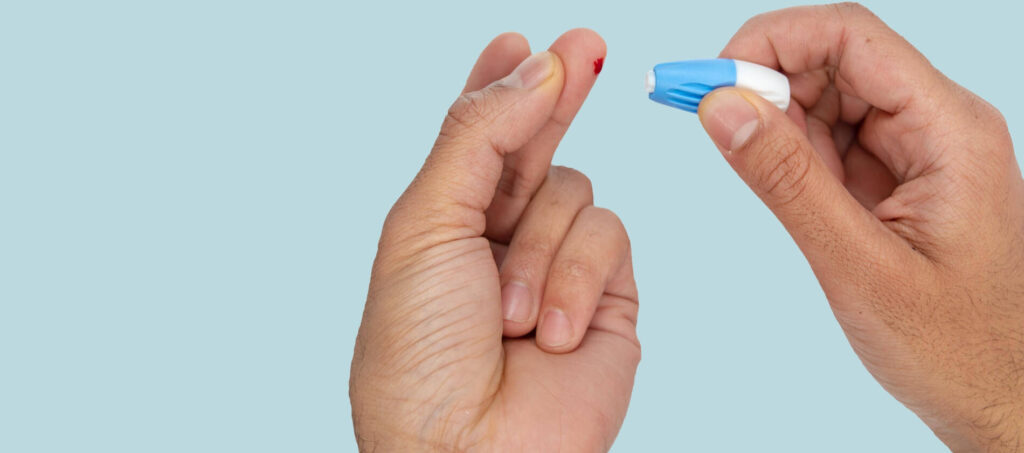HIV Transmission: Myth or Fact?
With more than 36 million people living with HIV worldwide, it’s important to understand how this disease is transmitted. There are still too many myths floating around about the virus and the way it can pass from one person to another. In order to protect yourself and your sexual partners, make sure you know the difference between fiction and fact when it comes to HIV. We’ll walk you through some of the most common myths about HIV transmission and provide you with helpful tips to prevent infection.
HIV Transmission Myths
When widespread concern about HIV first arose in the 1980s, it lead to a fog of misinformation that still lingers today. While you may have heard some of these ideas before, it’s important to understand the reality behind each one. Take a closer look at common myths about HIV transmission and learn the truth about what really happens with this disease.
Myth #1: You can get HIV by casual touching.
HIV only spreads through bodily fluids. That means you can’t get it from shaking hands, hugging, or kissing someone who is HIV-positive. HIV cannot be transmitted by sharing dishes or toilets, either.
Myth #2: Certain insects can transmit HIV.
Because blood is one of the bodily fluids that can transmit HIV, some people mistakenly believe that blood-sucking insects like mosquitoes and ticks can spread the disease. However, the virus can’t reproduce outside a human host. Therefore, it’s impossible to be infected with HIV from an insect bite.
Myth #3: Virgins can’t be HIV-positive.
Someone who has had no sexual contact could still be at risk for HIV if they’ve shared needles or drug equipment with an HIV-positive individual. In addition, some people who have had sexual contact consider themselves virgins because they’ve never had vaginal sex. However, you can still contract HIV from anal sex (which is considered a high-risk activity) or oral sex .
Myth #4: You can’t get HIV if you’re using birth control.
Hormonal birth control like the pill only reduces the risk of becoming pregnant and does not provide protection against HIV or other sexually transmitted diseases. Always practice safe sex and use condoms to reduce your risk of infection.
Myth #5: It’s okay to have unprotected sex if both partners are HIV-positive.
There are different types of HIV, so even if you and your partner are both infected, one of you could potentially infect the other with a new strain. Some strains are also drug-resistant, which can make HIV treatments less effective. Avoid reinfection by practicing safe sex with all partners even if you’re both HIV-positive.
HIV Transmission Facts
HIV can only be transmitted by the following bodily fluids:
- Blood
- Semen
- Pre-seminal fluid
- Rectal fluids
- Vaginal fluids
- Breast milk
Transmission may occur if bodily fluids from an infected person:
- Come in contact with a mucous membrane (found in the rectum, vagina, penis, and mouth)
- Come in contact with damaged tissue
- Are injected into the bloodstream from a needle or syringe
As a result, HIV transmission is mainly spread by sexual contact or sharing needles to inject drugs. In some cases, HIV transmission occurs during pregnancy, birth, or breastfeeding or when someone is stuck with an HIV-contaminated needle.
How to Avoid Transmitting HIV
If you’re living with HIV, there are several ways you can reduce the risk of transmitting HIV to others:
- Take HIV medication. The medication to treat HIV infection is called antiretroviral therapy (ART). If you take this medication exactly as prescribed each day, it can lower the amount of HIV in your blood to levels where there is little to no risk of transmitting HIV through sex.
- Practice safe sex. Always use condoms when you have sex. You can also try to focus on sexual activities that don’t involve contact with bodily fluids.
- Tell your HIV-negative partners about pre-exposure prophylaxis (PrEP) and post-exposure prophylaxis (PEP). PrEP can be taken daily to reduce the risk of infection. When used correctly, it’s up to 99% effective. PEP can be taken after a possible exposure to HIV to help protect against infection. It must be started within 72 hours after a possible exposure and taken for 28 days.
- Get tested for STDs, which can increase the risk of transmitting HIV.
- Never share needles for any purpose.
If you’re interested in learning more about PrEP, Nurx can help. It may be possible to get a prescription for PrEP online — just use the Nurx app to connect with licensed medical professionals who can determine if PrEP is a good choice for you and advise on next steps. You can also order a home HPV screening kit, learn about birth control options like pills or patches, and get prescriptions for Tri-Sprintec, Seasonique, and other popular birth control brands.
This blog provides information about telemedicine, health and related subjects. The blog content and any linked materials herein are not intended to be, and should not be construed as a substitute for, medical or healthcare advice, diagnosis or treatment. Any reader or person with a medical concern should consult with an appropriately-licensed physician or other healthcare provider. This blog is provided purely for informational purposes. The views expressed herein are not sponsored by and do not represent the opinions of Nurx™.







